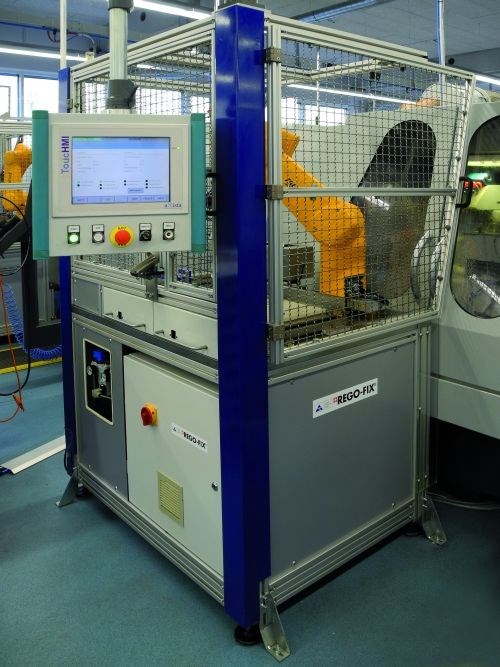Seeing How Rego-Fix Expanded and Added Automation
The manufacturer of precision tooling components recently expanded its Swiss headquarters integrating a good deal of automation as well as environmentally friendly initiatives.
Share




In March, Rego-Fix, manufacturer of precision tooling components, completed the expansion of its worldwide headquarters in Tenniken, Switzerland. An additional 7,000 square meters of space is now available for its production and warehouse operations, bringing total facility space to 12,000 square meters. I got a sneak peek of the new facility a couple weeks before the expansion was completed.
In planning this expansion over two years ago, Rego-Fix decided to move ahead despite the downturn in the economy and the growing fear of an ongoing global crisis. Company management explored other options for relocating its operations, but concluded that expanding the current location in Tenniken best served the company both now and for the future.
Rego-Fix integrated a number of design elements to enable its larger, well-lit facility to be more environmentally friendly. These include a 390 kW wood-pellet heating system, grass-covered roof for added insulation, rainwater collection via a 50,000-liter tank for select use in the building, air compressors with waste heat recovery for facility and water heating, a ventilation system that exchanges air seven times per hour, and well-insulated triplex vitrification windows.
The company also added a considerable amount of automation during the facility expansion, providing increased machining capacity and greater quality control for its collets, toolholder bodies and other toolholder components. To date, Rego-Fix has 20 machine-tending robots. These robots have enabled the company to realize a 40-percent increase in production. Production operations, which are now performed on two building levels versus the three previously used, currently run 24 hours a day/six days a week. The company handled its own automation integration, with many robot systems having a standard design. In addition, Rego-Fix continues to add automated four-axis Okuma turning centers, some installed with bar feeders for unattended machining of small components. It has also purchased a new Mitutoyo CMM using quick-change fixturing for fast, accurate part inspection.
Rego-Fix was founded by Fritz Weber as a one-man business in 1950. In 2006, his three sons—Richard, Stefan and Andreas—assumed the operations of the company, which has now grown to more than 200 employees. Its U.S. headquarters is located in Indianapolis, Indiana.

Rego-Fix now has 20 machine-tending robots in its recently expanded and more environmentally friendly facility in Switzerland.

Rego-Fix created many of its automation units based on a standardized design.
On a side note: This wasn’t my first visit to Switzerland. However, it was my first opportunity to sled ride down the Alps (that was cool). On the other hand, I was also able to take in the annual Chienbäse Fire Parade in the city of Liestal. This is a procession held on the Sunday night after Ash Wednesday during which people carry burning bundles of wood or pull bonfire carts with flames often reaching as high as the houses. Stefan, Andreas and I got as close to this parade as you can get. Check out the video I took. I’m thinking this wouldn’t fly in the States…
Related Content
-
Using the Toolchanger to Automate Production
Taking advantage of a feature that’s already on the machine tool, Lang’s Haubex system uses the toolchanger to move and store parts, making it an easy-to-use and cost-effective automation solution.
-
Lean Approach to Automated Machine Tending Delivers Quicker Paths to Success
Almost any shop can automate at least some of its production, even in low-volume, high-mix applications. The key to getting started is finding the simplest solutions that fit your requirements. It helps to work with an automation partner that understands your needs.
-
CNC Machine Shop Honored for Automation, Machine Monitoring
From cobots to machine monitoring, this Top Shop honoree shows that machining technology is about more than the machine tool.

























